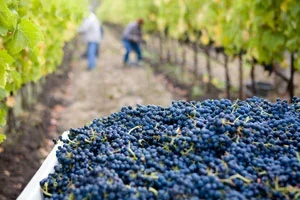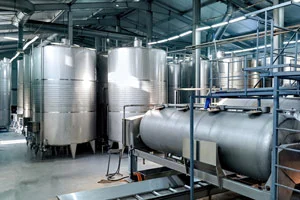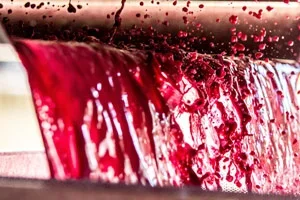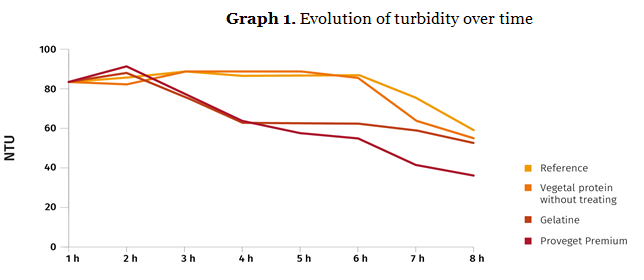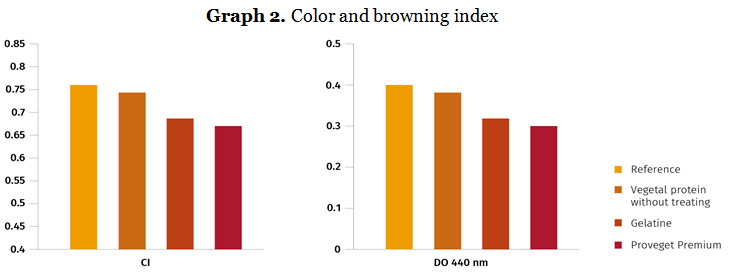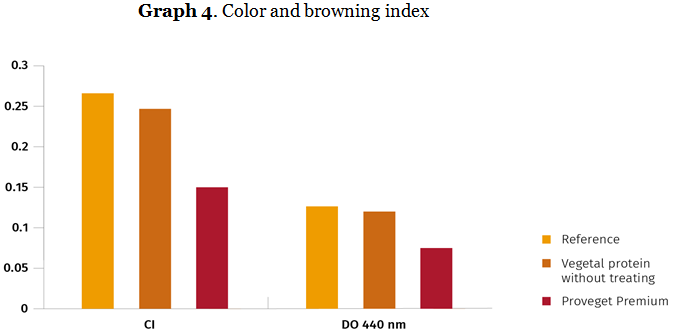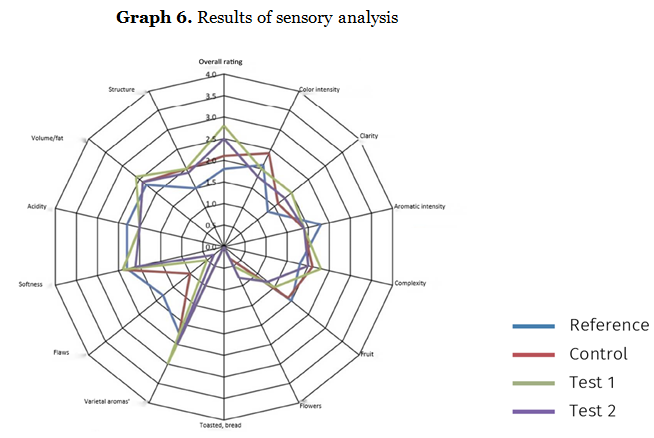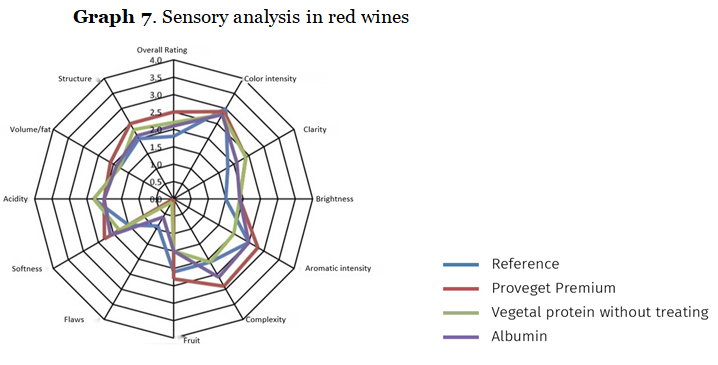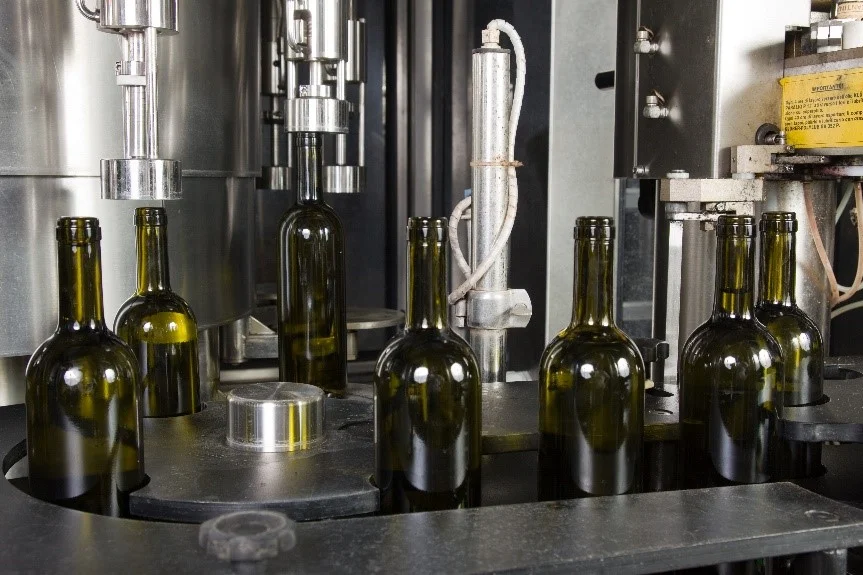When bottling a wine for sale, it is essential that the wine is limpid.
In today’s market, turbid or precipitated wines (regardless of their quality) are not well accepted. Therefore, clarity is an essential quality factor that every winery must meet before bottling their wines.
What causes a wine to be turbid?
During fermentation, a series of chemical reactions take place causing the suspension of particles in the wine, giving it a turbid look.
These particles have a positive or negative charge. An excess of particles with the same charge, as in the case of magnets, causes them to repel each other and float in the wine causing turbidity. Now, how do we remove that turbidity from the wine?
There are two scenarios:
- It can be removed on its own, rinsing with the racking. Over time, the positive particles eventually find other negative particles, linking up and settling to the bottom.
- It may not eliminate itself. In this case, the wine must be clarified with a fining agent.
What is clarification?
Clarification is the process of removing suspended matter prior to wine bottling. These compounds (dead yeasts, bacteria tartrates, proteins, etc…) are insoluble and float in the wine, creating a turbid and dull appearance. Sometimes they can interfere with wine aroma and flavor.
Once the wine is clarified, it is clean, clear and ready to be bottled.
How is a wine clarified?
To clarify a wine, the suspended particles must bind to other particles of opposite charge, transforming them into neutral particles, so that they can settle to the bottom and thus be eliminated.
What is it clarified with?
There are many types of fining agents, from fish glue or egg white to bentonite or polyvinylpolypyrrolidone (PVPP).
In this case we are going to talk about the vegetable fining agent Proveget Premium, which in addition to improving the limpidity of the wine, it achieves a decrease in tannic astringency, eliminates unpleasant notes of bitterness/greenness in the mouth, revealing fruity notes and improving the overall balance, all while respecting the structure of the wine.
Proveget Premium is the result of a research project called WINEBALANCE, in which AGROVIN has worked together with the University of Murcia (UMU).
A new formulation based on vegetable pea protein with greater reactivity and therefore greater efficacy compared to current options, as an alternative to the use of adjuvants of animal origin. It is a non-animal-derived, non-allergenic product, which allows a gentle fining of quality wines while providing freshness, respect for aromas and structure in the mouth. It is used to clarify white and red wines.
How is it used?
It can be applied directly to the sample to be treated. For this purpose, it is recommended to dilute the product 2-4 times its volume in wine or must.
To ensure homogenization, it is advisable to add the total volume with a dosing pump.
In white and rosé wines, the use of Proveget PREMIUM should be supported by the subsequent addition of Maxibent quality bentonite.
What are the findings from this new clarifier?
This clarifier is made with more purified raw material than others on the market. In addition, the extraction process is carried out at milder temperatures, which allows for a higher active fraction of solubilized vegetable protein and a change in its composition. This allows a better disposition to bind to oppositely charged compounds.
Unlike conventional pea protein, Proveget PREMIUM has functions such as carbohydrate and protein binding, common to those shown by the clarifier Vinigel (animal gelatin) although the peptide sequences are different.
Let’s go to the experimental part:
FINING POWER
The following graph shows how turbidity evolves over time:
A low clarifying efficiency of conventional pea protein is observed when compared to Proveget PREMIUM.
COLOR AND BROWNING INDEX
These two graphs also show the low color and browning removal capacity of conventional pea protein compared to Proveget PREMIUM.
Now, we will look at the effectiveness of Proveget PREMIUM separately, in white and red wines.
1. WHITE WINES
In experiments with white wine, the following has been observed:
FINING POWER
Significant differences in turbidity were observed for the tests with the addition of Proveget PREMIUM (compared to the tests with the addition of conventional pea protein at equivalent doses). The best limpidity results are obtained with the addition of Proveget Premium (turbidity reduction percentage of ~50%).
COLOR AND BROWNING INDEX
The following graphs show a significant decrease in the color intensity and browning level of the sample for the PROVEGET PREMIUM tests.
SENSORY ANALYSIS
Sensory analysis showed an improvement in color intensity and browning level in tests 1 and 2 (Proveget PREMIUM + Maxibent G at different concentrations). On the other hand, there are no vegetal notes in the nose or mouth after the addition of Proveget PREMIUM, and organoleptic defects in the nose and mouth are reduced.
*In test 1, the quantities used are as follows: 100 ml/hL P.PREMIUM, 20 g/hL Max.G. In test 2: 166 ml/hL P.PREMIUM, 20 g/hL Max.G.
The conclusions were as follows:
- PROVEGET PREMIUM: after 24 hours a decrease in turbidity is observed. A slight decrease in CI and browning of the sample (~10%) after addition of Proveget PREMIUM at a dose of 100 mL/HL. Significant decrease in color intensity and browning level of the sample (≥25%) for tests with addition of Proveget PREMIUM starting at 166 mL/HL. No significant variations in total and potentially oxidizable polyphenol content.
- PROVEGET PREMIUM + CONVENTIONAL PEA PROTEIN: after 24 hours only Proveget PREMIUM is able to decrease the turbidity of the sample. On the other hand, PROVEGET PREMIUM has a greater capacity to decrease the color and browning level than the untreated vegetable protein, using the same concentration.
2.RED WINES
In experiments with red wine, the following conclusions have been observed:
- A non-significant decrease in the color intensity and total polyphenol content in the sample after the addition of Proveget PREMIUM. The same results as with the white wines.
- Loss of “potentially oxidizable polyphenols” (DO 320 nm) after addition of Proveget PREMIUM at the maximum dosage. The loss of potentially oxidizable polyphenols is proportional to the dose used.
- No significant variations in the stability of the coloring matter were observed after the different treatments.
SENSORY ANALYSIS
Brightness
In the sensory analysis, the effectiveness of different fining agents was compared. As seen in the graph, the best rating belongs to Proveget PREMIUM. The wine retains its aromatic profile by using this fining agent, reducing defects, improving aromatic intensity and balance in the mouth.
As evidenced by the experiments, the effectiveness of Proveget PREMIUM is excellent compared to other fining agents on the market.
